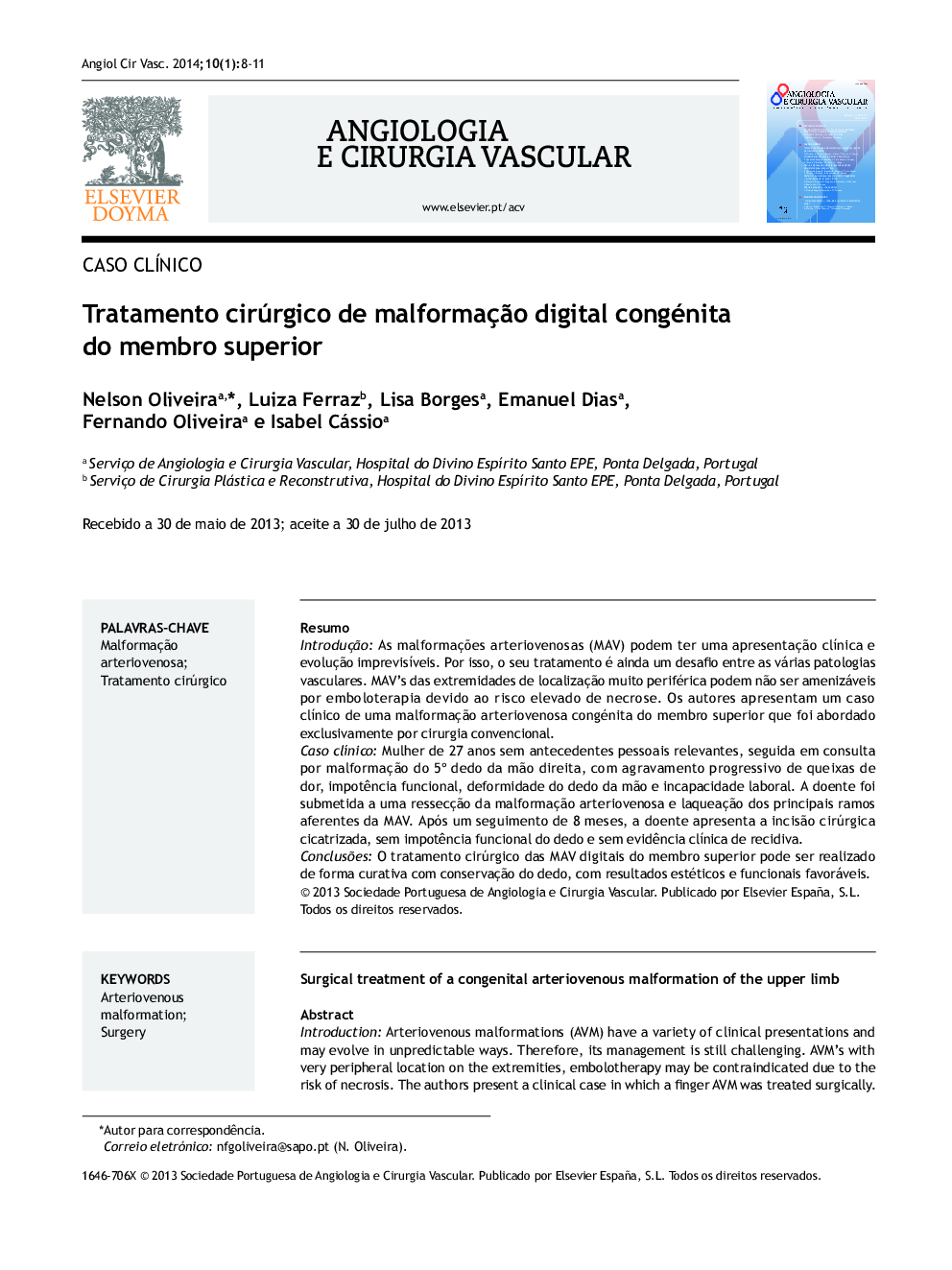| Article ID | Journal | Published Year | Pages | File Type |
|---|---|---|---|---|
| 2868397 | Angiologia e Cirurgia Vascular | 2014 | 4 Pages |
ResumoIntroduçãoAs malformações arteriovenosas (MAV) podem ter uma apresentação clínica e evolução imprevisíveis. Por isso, o seu tratamento é ainda um desafio entre as várias patologias vasculares. MAV's das extremidades de localização muito periférica podem não ser amenizáveis por emboloterapia devido ao risco elevado de necrose. Os autores apresentam um caso clínico de uma malformação arteriovenosa congénita do membro superior que foi abordado exclusivamente por cirurgia convencional.Caso clínicoMulher de 27 anos sem antecedentes pessoais relevantes, seguida em consulta por malformação do 5° dedo da mão direita, com agravamento progressivo de queixas de dor, impotência funcional, deformidade do dedo da mão e incapacidade laboral. A doente foi submetida a uma ressecção da malformação arteriovenosa e laqueação dos principais ramos aferentes da MAV. Após um seguimento de 8 meses, a doente apresenta a incisão cirúrgica cicatrizada, sem impotência funcional do dedo e sem evidência clínica de recidiva.ConclusõesO tratamento cirúrgico das MAV digitais do membro superior pode ser realizado de forma curativa com conservação do dedo, com resultados estéticos e funcionais favoráveis.
IntroductionArteriovenous malformations (AVM) have a variety of clinical presentations and may evolve in unpredictable ways. Therefore, its management is still challenging. AVM's with very peripheral location on the extremities, embolotherapy may be contraindicated due to the risk of necrosis. The authors present a clinical case in which a finger AVM was treated surgically.Clinical caseA 27 year-old woman with a known AVM affecting the 5th finger of the right hand presented progressive pain, functional and cosmetic impairment of the finger, which significantly interfered with her professional occupation. A surgical procedure consisting of ligation of all the afferent vessels with complete nidus resection was performed. After 8 months of follow-up, the patient had a fully healed surgical incision, and was without any functional limitations or signs of clinical relapse.ConclusionSurgical treatment of AVM affecting the fingers may be accomplished in a curative way with good cosmetic and functional outcomes.
